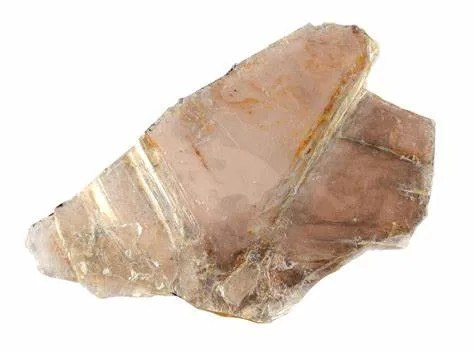
Appearance
Crystallization of muscovite occurs in the monoclinic crystal system. Its flawless basal cleavage results in crystals that are frequently tabular or sheet-like. Muscovite can be white, colorless, or with faint pink, brown, green, or yellow tones. It may also exhibit pleochroism, which is the ability to display distinct colors depending on the angle at which it is seen.
Geographical Distribution
The mineral muscovite is found in igneous rocks and is extensively spread. It also results from feldspars breaking down. Muscovite crystals large enough to be broken into sheets for use as windowpanes are discovered in Eastern Europe and India.
History
The term “muscovy-glass,” which was applied to the mineral in Elizabethan England, originated from its usage in medieval Russia (Muscovy) as a less expensive substitute for glass in windows. This usage originally surfaced in letters written in 1568 by George Turberville, the secretary of England’s ambassador to Russia under Tsar Ivan the Terrible. It gained widespread recognition in England during the sixteenth century.
Metaphysical Properties
Muscovite is utilized for metaphysical, energy-balancing, and meditation purposes and is thought to have medicinal powers in some alternative medicine and spiritual practices.

Chemical Composition
A potassium aluminum silicate mineral is called muscovite. The usual notation for its chemical formula is KAl2(AlSi3O10)(OH)2. The configuration of potassium (K), aluminum (Al), silicon (Si), oxygen (O), and hydroxyl (OH) ions in its crystal structure is represented by this formula.
Potassium ions are situated between the sheets of silicon-oxygen tetrahedra and aluminum-oxygen tetrahedra that make up muscovite. The structural trait that sets muscovite apart from other mica minerals such as biotite is the presence of aluminum.
Uses
The following are some of the main usage and application areas for muscovite:
- Electrical Insulation: The electrical and electronics industries value muscovite for its superior electrical insulating qualities. It is employed in the production of capacitors, insulators, and other electrical components which prevent current flow.
- Paints and Coatings: Because of its inherent pearly luster, ground muscovite can be utilized as a white pigment in paints, coatings, and cosmetics. It gives these items more opacity and brightness.
- Cosmetics: When finely powdered, mica is added to lipsticks, nail paints, and eyeshadows to give them a shine and sparkle. It is a well-liked option for cosmetic compositions because of its inherent shine.
- Lubricants: Some industrial applications use muscovite as a lubricant due to its sheet-like structure and lubricating qualities.
- Building Materials: Because muscovite sheets are transparent and heat resistant, they were sometimes employed in place of glass in historic wood stoves and lanterns. Today, though, this use is less widespread.
- Geological Studies: An important mineral for geologists is muscovite. Its existence and properties in rock formations can reveal details about the region’s metamorphic processes and geological history.
- Radiation Shielding: Muscovite has been utilized in specific applications for radiation shielding because of its capacity to block specific radiation types.
- Metallurgy: In certain metallurgical processes, muscovite can be introduced as a flux to lower the melting point of minerals and make it easier for them to separate during the smelting of ore.
- Decorative Uses: High-quality muscovite specimens possessing captivating crystal formations and hues are gathered and employed as ornamental elements, such as in jewelry and as exhibit mineral specimens.
Table





